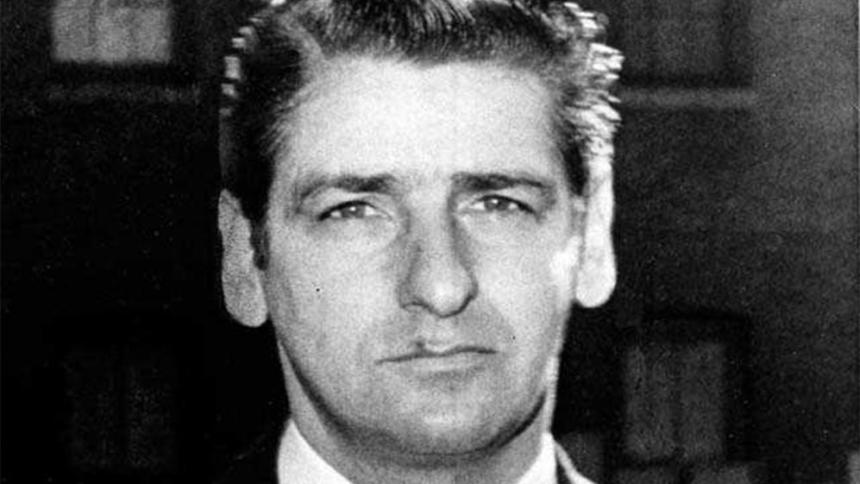
Boston Strangler: the first mass-media killer
On the 18th January 1967, the man alleged to be the Boston Strangler was sent down for life. It ended – or seemingly ended – the reign of the first bogeyman of the mass-media age. Before the Yorkshire Ripper, before Ted Bundy, before John Wayne Gacy, Jeffrey Dahmer, Charles Manson or the Zodiac Killer, there was the Boston Strangler. His spectral presence in Massachusetts caused a terrified sensation, triggering wild speculation and a desperate manhunt, inspiring a star-studded Hollywood film and generating controversy that has lasted till this day.
It was in July 1962 that an article appeared in a Boston newspaper. It sounded the alarm with the words ‘A mad strangler is loose in Boston’, describing how several women ‘were strangled in their own apartments’. It also emphasised how, even this early on, the murders were morphing into a fearful phenomenon in the city, generating rumours and crank calls: ‘Several women in the Greater Boston area have kept police lines busy complaining of an anonymous caller who identified himself as the Strangler, and says “You will be next”.’
Over the next two years, an array of women were sexually assaulted and murdered in their own homes in Boston and the wide area, in a case that became a maddening puzzle. For one thing, there was the weirdly varying MO of the killer. Unlike many serial killers, the Strangler didn’t appear to have a ‘type’. His victims ranged from a 19-year-old to an 85-year-old (the latter so weak that she collapsed from a fatal heart attack before the Strangler could even do anything). There was also his eerie ability to gain access to people’s homes without any force whatsoever, commit his crimes and then disappear without anyone realising what had happened.
Paradoxically, though the whole city was soon in the grip of panic over the phantom Strangler, women were still, for some reason, letting him into their homes willingly. Crime author Erle Stanley Gardner, then famous as the creator of fictitious legal eagle Perry Mason, came to Boston to write an in-depth analysis of the Strangler case for a national magazine, noting that ‘the Strangler does not pick locks; he does not break windows: apparently he is let in by the victims themselves. This in itself is utterly incongruous.’
The Strangler’s way of silently striking and vanishing without a trace bolstered his status as a bogeyman – an American Jack the Ripper who was seemingly unstoppable despite the antsy vigilance of women in Massachusetts. ‘One can easily accept the idea that a man may claim to be a salesman, repairman, or delivery boy,’ Erle Stanley Gardner mused. ‘But after the first two or three deaths had been publicized, why would any woman let a stranger into her apartment, no matter what the excuse?’
One local woman, quoted in Gardner’s article, summed up the paranoia of the time by describing her routine whenever she got home. ‘You look in the closets, under the bed, and in the bathroom. If a man is in there you want to be able to run out, screaming for help. Therefore, you should leave the door open. But if you leave the door open while you are making a search, what is to prevent the Strangler from following you in and standing between you and your means of escape when you first see him? Do you enter the apartment, lock the door, and then start searching; or do you leave the door unlocked, or open, and make a hurried search?’
The riddle of Albert DeSalvo
Was the Boston Strangler ever caught? The answer is ‘Yes, maybe’. The man whose name is synonymous with the Strangler is Albert DeSalvo, originally arrested not for the murders, but as the prime suspect in a string of armed robberies and sexual assaults. It was only while awaiting trial on these charges that DeSalvo confessed to a fellow prisoner – a convicted killer named George Nassar – that he was, in fact, the Boston Strangler.
While there was no physical evidence tying DeSalvo to the Strangler crime scenes, his confession did seem to contain certain details the police had withheld from the public. In a counterintuitive twist, DeSalvo’s lawyer – F. Lee Bailey, who would decades later become a member of OJ Simpson’s defence team – actively pressed for DeSalvo to be recognised as the Boston Strangler, in order to have him declared insane and sent to a psychiatric hospital. He even described his client as a ‘completely homicidal vegetable walking in the form of a human being’.
It didn’t work, and DeSalvo was convicted for the rapes and robberies. He was later stabbed to death in jail, never having stood trial for the Strangler murders. While pop-culture regarded him as the killer – he was even played by silver screen heartthrob Tony Curtis in the 1968 movie The Boston Strangler – many always doubted he was the culprit. One medical expert who knew DeSalvo dubbed him a ‘compulsive confessor who desperately needs to be recognised’, while some have suggested the inconsistent MO of the Strangler implies more than one person was responsible. Another theory is that George Nassar, the prisoner DeSalvo originally confessed to, was the real Strangler, and had coached DeSalvo on what to say to the police.
The case was seemingly closed in 2013, when the latest DNA analysis techniques conclusively established that DeSalvo killed a 19-year-old woman named Mary Sullivan in 1964. Sullivan is considered the last canonical Strangler victim, so if DeSalvo killed her, that would presumably mean he was the Boston Strangler after all. Unless, of course, that was a one-off killing by DeSalvo, unconnected with the preceding string of victims of the real Boston Strangler.
Either way, the case remains notable as one of the earliest examples of how the age of television and tabloid journalism helped turn a serial killer into a ‘celebrity’, and for setting the sensationalist template for all the true crime lore that has become such a compulsive part of culture today.





